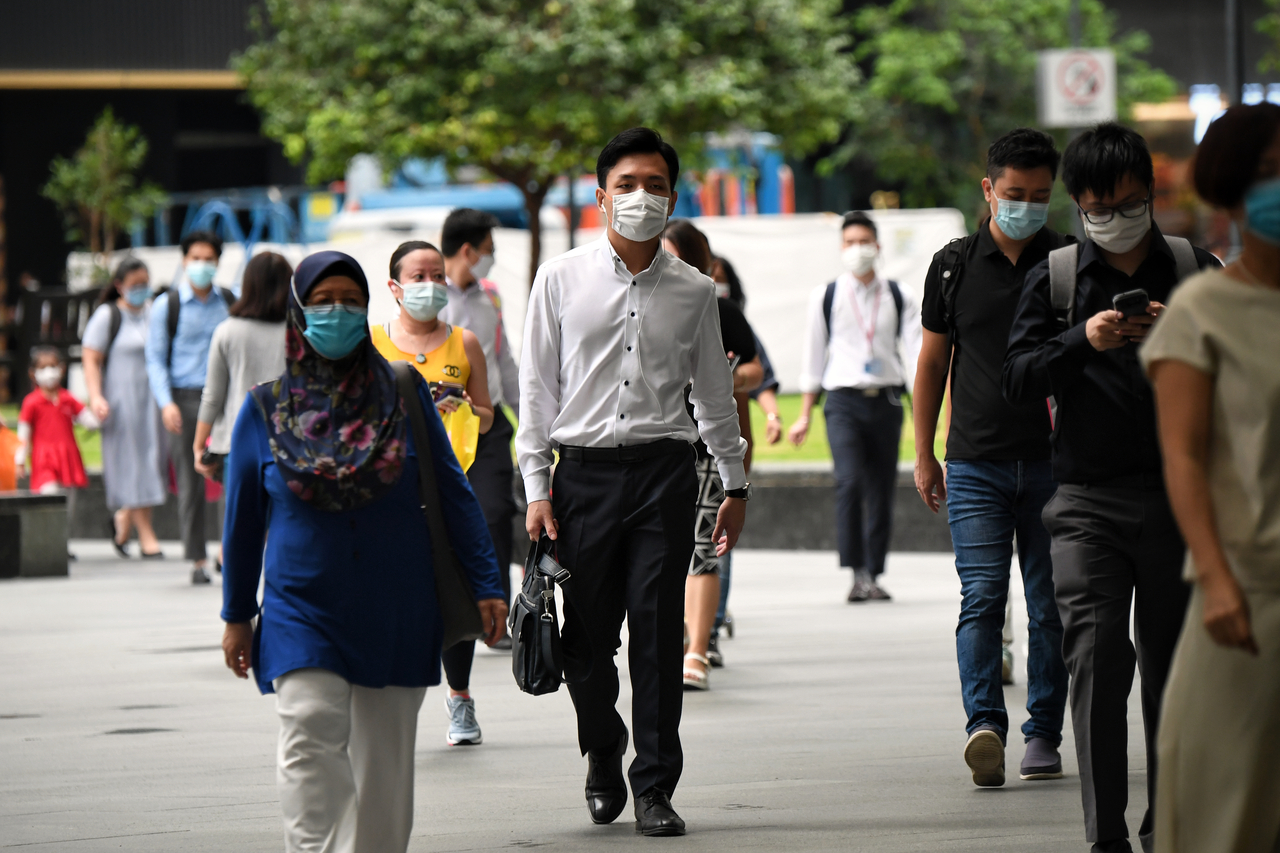S'pore resident employment up for two consecutive quarters: MOM
Sign up now: Get ST's newsletters delivered to your inbox

The total employment contraction in 2020 was also the most severe in two decades.
ST PHOTO: KUA CHEE SIONG
Charmaine Ng
Follow topic:
SINGAPORE - Despite challenges posed by the pandemic, Singapore's resident employment continued to rise while its unemployment rate fell.
Retrenchments, too, dipped in the fourth quarter of last year, after rising for five straight quarters.
While cautioning that recovery might be uneven this year and the momentum gathered by the labour market could potentially stall, Manpower Minister Josephine Teo said on Thursday (Jan 28): "Considering how disruptive the Covid-19 pandemic was at all levels and across all sectors of the economy, the fact that resident employment actually managed some modest growth is something that we are very encouraged about."
Resident employment grew by 28,900 in the fourth quarter of last year - the second consecutive quarter of growth after expanding by 43,200 workers in the previous three months.
On the other hand, non-resident employment fell by 42,400, said the Ministry of Manpower (MOM) in its preliminary estimates for the fourth quarter of last year. This was mainly due to reductions in foreigners holding work permits.
For the whole year, resident employment grew by 9,300, while non-resident employment fell by 181,500, or 16 per cent. This resulted in total employment contracting by 172,200 last year - the most severe in two decades.
Unemployment also continued to ease, with rates declining for two consecutive months - November and December.
Last year, the unemployment rate was 4.1 per cent among residents and 3 per cent overall, compared with 3.1 per cent and 2.3 per cent respectively in 2019.
Overall, the unemployment rate last year was higher than 2019's, but remained below past recessionary peaks.
Mrs Teo said the growth in resident employment was a testament to workers' resilience, as well as employers' willingness to retain locals with the support of initiatives such as the Jobs Support Scheme, and SGUnited jobs and traineeships.
"I would also say that the schemes that we put in place played a part... They worked better than I dared to hope," Mrs Teo told the media after visiting interior design company WEDA StudioInc.

She agreed that "some of the employment opportunities that people got themselves into last year were not exactly what they had set out to find when they embarked on the job search".
But locals were willing to try different jobs and that led to the country being able to maintain a "high degree of resident employment" by the end of last year, she added.
Labour market estimates on Thursday also showed retrenchments declining in the fourth quarter of last year to 6,100, after increasing for five consecutive quarters.
For the whole year, however, retrenchments affected 26,570 workers - the highest since the 2001 recession due to the dot.com bust.
Given the larger workforce now, though, the incidence of retrenchments was smaller than in past recessions, at 13 per 1,000 employees.
During the severe acute respiratory syndrome outbreak in 2003, it was 16 per 1,000 employees.
Last year's lay-offs were mostly in sectors such as the arts, wholesale trade and air transport services.
MOM said it remains to be seen if the fall in retrenchments will continue this year, as the ongoing travel restrictions and business transformations in other sectors may cause further job losses.
Even the whole momentum of the labour market recovery could potentially stall this year, Mrs Teo cautioned.
"If that were to happen, certainly we would expect that retrenchments will remain elevated," she said, adding that the Government will be announcing new measures to support employers and workers in the coming Budget.

